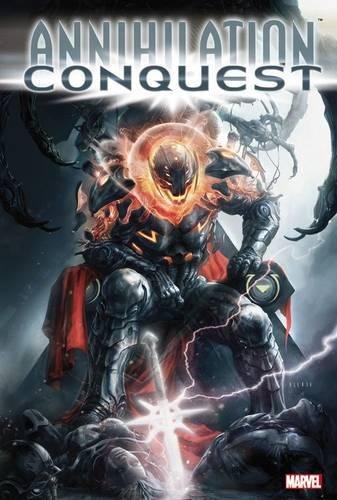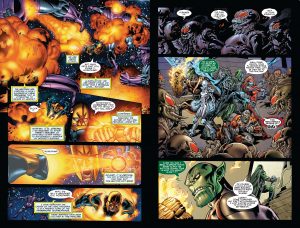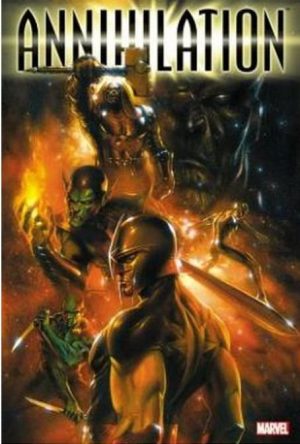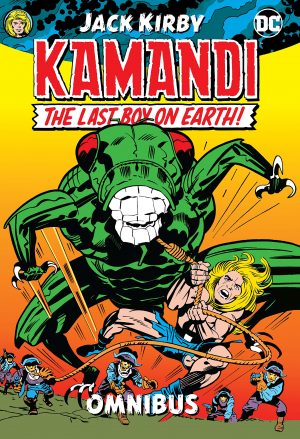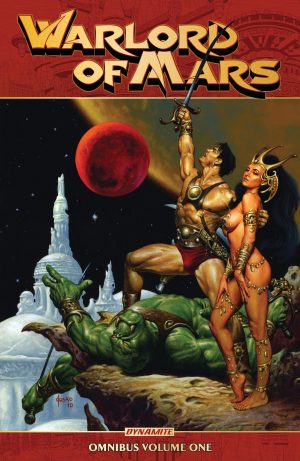Review by Ian Keogh
Annihilation was perhaps more successful than Marvel expected, a rollicking space adventure uniting assorted off-Earth characters against a horrifying threat. Annihilation Conquest duly followed, picking up on many of the cast, and proving equally successful, not least by spinning out the Guardians of the Galaxy team based in the 21st century.
They’re not the only writers, but the overall control of events falls to the team of Dan Abnett and Andy Lanning who contribute all the Nova portions and the title sequence concluding this Omnibus. There’s more of Nova than other content, as his new series was launched to coincide with the release of Annihilation Conquest, and the first dozen issues rarely stray far from its plot threads. Abnett and Lanning first acquired Nova during Annihilation, and transformed him there from one of many thousands of armoured galactic police to the sole representative of that kind, uniting him with the Worldmind, the sum of all Xanadarian knowledge. A very good interlude is set on Earth, but Abnett and Lanning conclude Nova’s better as a human in the wider universe than one of many hundred Earth-based superheroes.
The bigger story is that in the wake of Annihilation a techno-virus spread by the Phalanx is able to conquer planet after planet, using the chaos of devastation to assimilate their populations into its greater hive mind. The Kree are among the first to fall, and alongside them the Phalanx absorb some very powerful beings all intent on spreading the virus further. The structure of Annihilation is followed, with a prologue introducing matters and thereafter seeing how Quasar with Moondragon, Starlord and several allies, Nova and a new tormented character, Wraith deal with various manifestations of the Phalanx.
The artistic balance is substantially positive. The distorted style of Kyle Hotz doesn’t always work, but in this instance he’s suited to the glum nature of Wraith’s personality, leaving the only disappointment as Tom Raney (sample art right), unfortunately working the six episode title sequence and finale. He never manages clarity, squashing his characters into panels. Mike Perkins is elegant on the prologue, Sean Chen (sample art left) provides interesting visual effects for Nova, Wellinton Alves is good wherever he appears, and Paul Pelletier’s work depicting a planet with machine life forms is spectacular.
With such a segmented story there are dips. Abnett and Lanning follow a good sequence with Nova on Earth with their weakest section as Nova first attempts to fight off the virus, but their material is generally strong on ideas and surprises. Keith Giffen’s chapters about Star-Lord and allies is, in effect, the formation of the Guardians of the Galaxy, also strong on surprises. Javier Grillo-Marxuach introduces a viable character in Wraith, little seen since, and only the work of Christos Gage on Quasar and Moondragon consistently average. Their relationship never convinces, a transformation is banal, if visually spectacular, and their eventual method of victory telegraphed and obvious. Contrast that with the way Abnett and Lanning introduce all sorts of possible methods of defeating the enemy in the final sequence.
The inclusion of more Nova chapters solves a weakness of Annihilation Conquest spread over Book One and Book Two, where his arrival at the last knockings for a pivotal intervention came over as very convenient. As noted, though, this isn’t gold overall, and at the high cover price for the Omnibus, perhaps best bought as the original paperbacks. Nova’s content can be found in Nova: Annihilation Conquest and Knowhere.
